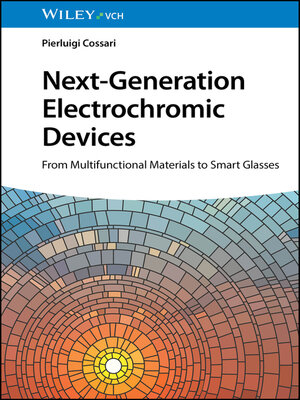Next-Generation Electrochromic Devices
ebook ∣ From Multifunctional Materials to Smart Glasses
By Pierluigi Cossari

Sign up to save your library
With an OverDrive account, you can save your favorite libraries for at-a-glance information about availability. Find out more about OverDrive accounts.
Find this title in Libby, the library reading app by OverDrive.



Search for a digital library with this title
Title found at these libraries:
| Library Name | Distance |
|---|---|
| Loading... |
Comprehensive reference focusing on features of promising new materials and devices for electrochromic and integrated multifunctional systems
Next-Generation Electrochromic Devices: From Multifunctional Materials to Smart Glasses covers the basic concepts and the potential use of electrolytes, conducting polymers and multifunctional materials for the development of electrochromic (EC) and integrated systems, focusing on the influence of solid-state electrolytes and interface features on the design of new device structures and simplified manufacturing.
The book is divided into three parts. Part I explores the chemistry of the main components of devices with a special focus on the main critical material issues, covering mixed-ion and electron conductors, electrodes, and more. Part II describes EC and multifunctional devices, such as photoelectrochromic smart windows and see-through ECOLED displays, and the main characterization techniques for the study of material properties, interfaces and device performance. Part III comprehends device manufacturing, scale-up procedures, and discusses the main benefits of smart windows in terms of energy savings, visual comfort, and environmental impact, proposing contextually a multitude of pioneering ideas and concepts with a specific insight into emerging devices in the era of Artificial Intelligence (AI), immersive reality and invisible technologies.
Next-Generation Electrochromic Devices includes information on:
Next-Generation Electrochromic Devices is an essential reference on the subject for materials scientists, chemists, physicists, as well as architects, electrical and civil engineers. It can be also a source of inspiration for artists, graphic designers, and art workers.







